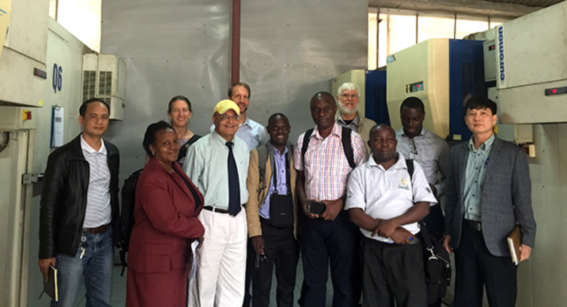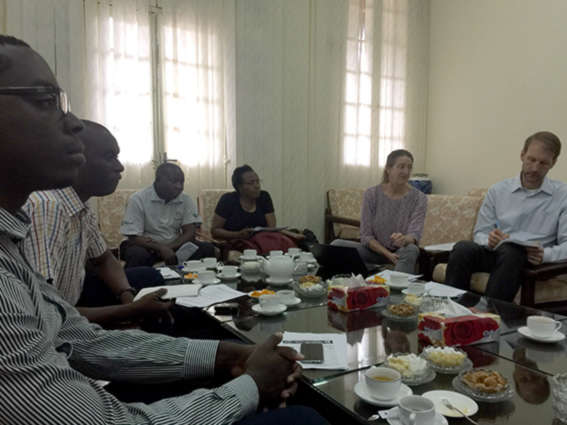Vietnam - Uganda’s Ministry of Health gains insight from Vietnam’s immunization programme
Representatives from the Uganda Ministry of Health (MOH) visited Hanoi for the first time at the beginning of January to conduct a study tour to learn from our Vietnam’s successful Expanded Programme on Immunizations (EPI). The group of five delegates attended a presentation at the National Institute of Hygiene and Epidemiology (NIHE). The former Chief Technical Adviser of the support project to the NIHE (VIE/025) was also present to exchange on the lessons learnt. The groups visited a national vaccine storage facility used to receive and distribute vaccinations as the first link in the nationwide vaccine cold chain extending to 5,000 communes, 700 districts and 63 provincial level cold chain facilities which were equipped primarily under the long standing Luxembourg support lasting over a decade. The EPI programme received support from the Luxembourg Government between 1995 and 2012, as well as other organizations like WHO, UNICEF, JICA and GAVI.

“We feel that Vietnam has come a long way in trying to understand the team performance of the cold chain systems, which we are not doing back home,” said Dr. Luzze Henry, acting manager of Uganda’s National EPI. “We will be able to learn from this and take this practice back home.”
NIHE, PATH and LuxDev representatives discussed the implementation and maintenance of the EPI programme, which has improved drastically in the last decade. Over the years, Vietnam has grown and enhanced its vaccine cold chain, the process by which vaccinations are stored and transported in refrigerated equipment to ensure that they are safely delivered to patients.
Joanie Robertson, Technical Adviser of vaccine and pharmaceutical technologies at PATH, Geneva, Switzerland helped to coordinate the meeting in order for the Ugandan MOH EPI team to learn about the successes and challenges Vietnam faced while expanding its cold chain model.
“We had a meeting, and they shared a picture from both sides, and one of the main thing is getting the Government to commit sufficient resources – that’s a common challenge that they both have”, Robertson said of the Ugandan and Vietnamese agencies. “They both introduced new vaccines in the last 10 years, and that’s also a challenge.”

Vietnam introduced two new vaccines in 2014 to protect citizens from Haemophilus influenzae type b (Hib) and measles-rubella (MR). Prior to that, Vietnam made strides in its vaccination programme by eradicating polio in 2000, followed by maternal and neonatal tetanus in 2005. The nation has also greatly reduced the rate of measles, Hepatitis B and other diseases that are targeted by the EPI programme.
Vietnam’s current cold chain model is unrecognizable from the system it had in 2009. At that time, only 57% of the 179 refrigerators in one northern province of Vietnam were functional. The distance of transporting vaccinations was an issue, as well as outdated equipment powered by gas. The system lacked systematic monitoring and documentation of equipment, clear responsibilities and communication, and resources to make repairs to equipment.
The project VIE/025 tackled these issues by training provincial and national equipment managers to manage and maintain the cold chain equipment. It also provided a set of tools and basic spare parts to all 63 provinces, and the maintenance of the equipment was outsourced during the span of the project. Equipment was added and upgraded, and all areas of the country now have reliable electricity-powered facilities.
Perhaps most importantly, the project focused on the importance of strengthening personnel, which is the true key to the EPI programme’s success, according to Raja Chowdhry, former Chief Technical Adviser to VIE/025:
“Our objective was to change the mindset of the staff. That was the first step,” Chowdhry said. “EPI in Vietnam has a successful programme – the programme side is very good, and I saw that they meet often, but they didn’t talk about all the EPI numbers and vaccinations. They never talked about how it is done, what are the logistics. So our first success was after years of trying, when EPI started to report the functional levels of the refrigerators in the facilities, which was the first success. Now they have received the message that it’s also important to report on how the cold chain is functioning at each level.”
↑ To the top